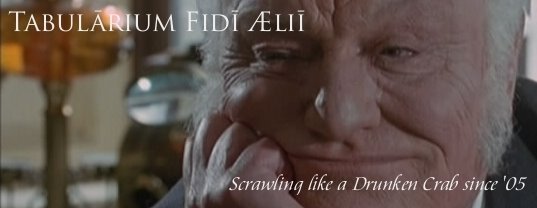via FoxyTunes
Been ages, I know. But I'm here now with something that's been much on my mind since the release of The Dark Knight in IMAX: How are they gonna deal with the different aspect ratios on DVD?
The answer is "in a mixed way." As you all may or may not know, IMAX is filmed in a 1.43:1 aspect ratio, that is, the image you get is 1.43 units longer than it is tall. With the screen as big as it is, that's pretty darn close to square. However, your standard 35mm film (the stuff that gets shown in movie theaters and is usually marketed as "widescreen" on DVD shelves) is a whopping 2.40:1, giving it that cinematic "clipped from the top and bottom" or letterboxed look.
Given the cost and highly unwieldy use of IMAX cameras, only a few of the big scenes in The Dark Knight were filmed in the format, which meant that two things happened. For the IMAX release, they took the rest of the scenes that were shot in standard 35mm and projected them onto the screen in their original ratio, leaving a portion of the top and bottom of the screen unused while the scenes shot in IMAX took up the entire screen. Given just how freakin' huge an IMAX screen is, the 35mm still took up a whole lot of space, but the changes of the aspect ratio were definitely noticeable.
For the theatrical (non-IMAX) release, they simply took all the IMAX scenes and cropped the top and bottom off of the images so that it got squeezed back down to the correct 2.40:1 ratio. To the directors and cinematographers credit, the IMAX sequences were still really well framed, so editing them down didn't do much damage to the visuals. For purists, the IMAX version remains the most intact.
For the DVD's, two things were done. The closest to the original aspect ratio was the inclusion of the IMAX scenes as a separate extra in the Standard Definition 2-Disc Set. While one can see the entirety of the shots in this extra, the wonky IMAX formatting means that not only is the image cropped off at the sides, but also at the top to allow for viewing on a standard 4:3 TV or computer screen. However, the entire image is there, and in the end makes a nice extra to have. The only odd thing is that this is missing from the High Def Blu-Ray release, for reasons unknown.
Instead, for both the Blu-Ray and the Digital Copy of the movie, they re-set the aspect ratio to 1.78:1 for the IMAX scenes, allowing for more of the image to be seen. My guess as to why this is is that a switch from an image that's cropped up and down to an image that's cropped on the sides would be too jarring for those viewing on an HDTV (itself being a 16:9), who's image would have to contract inward to preserve the proper aspect ratio (rather than the 35mm image "expanding" to fill an IMAX screen).
Allow me to illustrate, starting with the most constrained and moving outward. Here's a shot from the opening heist scene, cropped from the 1.43:1 IMAX to the 2.40:1 of 35mm:
2.40:1

It looks great, which is once again testament to how well the film was shot. Remember, however, that this isn't all of the shot. Here's that same image, but taken from the 1.78:1 Digital copy:
1.78:1

Notice how you can now see more of his legs below the mask, the curb he's standing on, and the tops of some of the street lights. I thought it was interesting as I was formatting these pictures that the above picture, when squeezed down to the same 720 x 480 pixels as the first picture, was essentially the same but without the letterboxing. Don't let the lack of black bars across the top and bottom fool you, however. This still isn't the full image. For that, I give you the below:
1.43:1

Here is the IMAX image in it's entirety. Notice you can now see his feet and some of the sidewalk below it, and the water tower in the upper right-hand corner is fully visible. Notice also the letterboxing on the sides of the picture. This isn't cropping, but squeezing the image so that all of the top and bottom can be seen, and due to the closer-to-square nature of the image on the closer-to-rectangle screen I took it from, you get the above formatting.
Although the IMAX formatting is a special case, now you can see what's lost, and you might have a bit of an idea of why aspect ratio purists (like myself) prefer Widescreen to Fullscreen. The latter is the 35mm with it's sides chopped off to fit into a 4:3 TV screen (hence the "this movie has been modified from it's original to fit your TV" warnings you'd get on VHS tapes back in the day).
So, the one thing you should take from all this? If you haven't seen The Dark Knight in IMAX, go see it when the re-release it next month. And if you haven't seen it at all? For the love of god, pony up the extra cash to see it on that freaking huge screen. It makes an excellent movie that much better.
Enough, More Later.
- James
